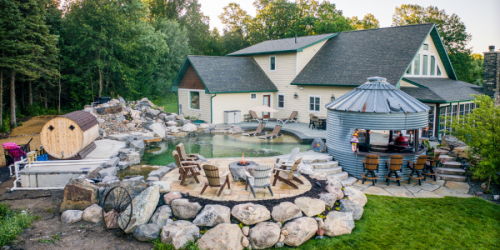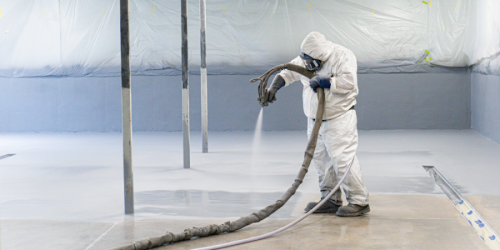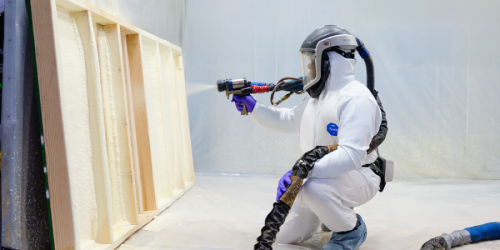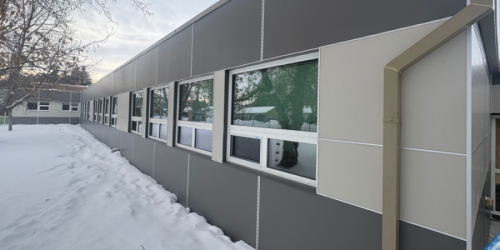Q&A Forums
What do the numbers REALLY mean Post New Topic | Post Reply
| Author | Comments |
|---|---|
|
Circle-D
Posted: Jan 09, 2009 08:13 AM
|
What do the numbers REALLY mean
Mason Can you define what the flame spread and smoke developed numbers really mean to the average consumer? Do all building materials have these numbers attached? I've never noticed them anywhere else but sprayfoam tech sheets. Thanks |
|
mason
Posted: Jan 09, 2009 08:36 AM
|
Circle D, Here is a reprint of an article I wrote for RSI magazine on the subject titled Foam Plastics and Fire All building materials can burn and release heat and toxic gases, causing injury or death. All building materials react differently in a fire situation. And while the history of testing interior finishes for fire characteristics goes back to the early part of the 20th century, it took a series of disastrous fires in the 1940s for the public to raise concerns sufficient enough to take action. The infamous fires at the Coconut Grove nightclub in Boston, the Chicago LaSalle Street Hotel, and the Atlanta Winecoff Hotel killed more than 670 people and prompted the public to demand a reliable test to determine the flame spread and smoke development of a building's interior finish in a fire situation and to classify them for use in buildings. ASTM E-84 (Steiner tunnel test) The predominant test accepted was the Steiner tunnel test, developed by Albert Steiner of Underwriters Laboratories (UL) from the early 1920s to the '40s. Steiner used red oak as a baseline material because of its common use as a flooring material. The Steiner tunnel is a furnace chamber 25 feet long that measures flame spread and smoke development. The test compares the surface flame spread and smoke generated to that obtained from tests of mineral fiber cement board and select-grade red oak. The test procedure was first published by UL in 1950 and became an American Society for Testing and Materials (ASTM) standard in 1961. How well your material performed against the baseline determined the classification of your building product. The test is conducted with the specimen in the ceiling position, with the surface to be evaluated exposed face down to the ignition source. The furnace is calibrated when a 10-minute test of red oak decking will pass flame out of the end of the tunnel in 5 minutes 30 seconds (plus or minus 15 seconds). Mineral fiber cement board forms the zero point for flame spread and smoke-developed indices, while the red oak flooring flame spread is typically around 90 and smoke developed index is set at 100. Flame is reported numerically from 1 to 100. Smoke generated is reported numerically from 1 to 1,000. From the flame spread and smoke ratings, the material or product is listed in three classes: Class I (or A), Class II (or B), or Class III (or C), or unrated: Class I: Flame spread 0-25; Smoke developed 0-450 Class II: Flame spread 26-75; Smoke developed 0-450 Class III: Flame spread 76-200; Smoke developed 0-450 Foam plastics and FTC consent decree For the next 20 years, the Steiner tunnel test became the predominant method of determining if an interior finish was an acceptable risk for use in construction. In the late 1960s to early '70s, foam plastic was becoming a popular alternative insulation in buildings. Many companies advertised the foam based on the Steiner tunnel test as non-burning, non-combustible, and self-extinguishing. Most foam plastics could achieve Class I and Class II ratings on their products, but the flame ratings did not accurately predict the relative safety of their use in construction. Thermoplastic foams, such as expanded polystyrene (EPS) and extruded polystyrene (XPS), would melt during the test, generating misleading low flame-spread values. Thermoplastic materials, such as polyurethane foam, could generate flame or flashover conditions if large surface areas became involved in a fire. After a series of fires involving foam plastics, the Federal Trade Commission (FTC) stepped in and demanded the foam plastics industry address the issue. In 1974 the FTC entered into a Consent Decree and Order with the foam plastics industry (as represented by the Society of the Plastics Industry [SPI]) that prescribed specific marketing and sales practices of foam plastics. The Consent Decree and Order stated that all parties selling or installing foam plastic: Cease and desist from using, publishing, or disseminating (or encouraging others to use, publish or disseminate) descriptive terms, such as 'non-burning,' 'self extinguishing,' or 'non-combustible' in connection with cellular foam plastics products unless they perform as described under actual fire conditions; Refrain from referencing numerical flame spread ratings in connection with cellular foam plastic products, based on small-scale flammability tests without a detailed disclaimer noting that the ratings are not predictive of the hazards presented by these products under actual fire conditions; Implement a notice and reporting program on the terms and conditions of, and compliance with, the order; Establish and fund a research program on the safe and effective use of cellular foam plastic products. In the 1970s SPI, working in conjunction with downstream industry groups, such as the Urethane Foam Contractors Association (UFCA), the polyurethanes division of SPI, and the polystyrene foam groups, conducted extensive large-scale tests on foam plastics and various coverings. From this research new fire-performance tests were developed that more accurately demonstrated the behavior of wall and ceiling assemblies under realistic fire situations. Specific thermal barrier materials were identified, such as half-inch gypsum drywall and 1-inch-thick masonry/cement/plaster along with the development of specific room corner fire tests that could determine what designs, materials, and/or assemblies could be acceptable in construction (such as UL 1715, Factory Mutual [FM] 4880, Uniform Building Code [UBC] 26-3, National Fire Protection Association [NFPA] 286, etc.). The foam plastic industry established safe-use guidelines adopted by the various building codes that remain substantially unchanged to this day. All interior coverings inside a building must be tested in accordance with ASTM E 84 to determine their flame and smoke rating. However, foam plastics because they burn differently from other building products such as wood, steel require a thermal barrier or ignition barrier (attics and crawl spaces) ASTM E 84 |
|
Circle-D
Posted: Jan 09, 2009 09:48 AM
|
Can you give me a couple of commom examples of some class 2 and 3 building materials. Plwood,OSB ,LVL's I assume would be more flammable than some other things. I commomly tell customers that the foam will not burn as easily as the couch they are sitting on or the dining room table they eat at. Is that a correct statement? |
|
mason
Posted: Jan 09, 2009 02:43 PM
|
Most folks know that wood burns and how it burns. And many folks know of the hazards of burning couches. (There is a serious fire debate between the NFPA, the fire marshals and the Polyurethane Foam Manufacturers Association whose members include predominately the furniture manufacturers. So don't think they are immune to these discussion.) But, foam plastics burns differently. In the case of sprayfoam, if a large enough surface area is exposed and comes in contact with a flame source of 600 to 800 degrees, the surface of that foam can flash emitting large amounts of smoke and heat in a very short amount of time. The flames will consume the surface area of the foam like an ocean wave and about at the same speed. This is what makes sprayfoam a hazardous material when left exposed. This flash can take place regardless of the flame spread or smoke rating. A class I foam can flash just as much as a non rated foam. If a person is in a room with a cutting or welding torch, catches the foam on fire, he may not have time to get out of the area before being overcome by smoke. This type of fire has occured more often than we would like to see and folks have died as the result. But, if it is covered with a thermal barrier, the foam is more resistant to fire consumption than many building materials, in addition the foam chars typically and stays in place, preventing smoke and flames from going between floors or rooms. So once covered with an appropriate material, foam is one of the safer materials to use in construction. Hope this helps. |
|
Circle-D
Posted: Jan 09, 2009 02:57 PM
|
yes, very much so, Thank you |
|
Eric Machemer
Posted: Jan 09, 2009 06:07 PM
|
Mason, Hope your holidays went well and I'm glad to hear your new venture is prospering. We considered your visit with us back in June to be very valuable in the development of our business. I was hoping you would comment on the risks associated with open cell versus closed cell foam in a fire situation. In our area, there are many interested parties that seem to hold the belief that open cell foam does not pose the same risks as closed cell foams. What would be your response to such arguments? Thanks in Advance, Eric |
|
mason
Posted: Jan 09, 2009 09:11 PM
|
The same rules apply equally to both open cell and closed cell foam. I have witnessed full scale fire tests on both products that demonstrate a flash fire can occur with either product. |
|
Eric Machemer
Posted: Jan 10, 2009 08:36 AM
|
Mason, Of the tests that you witnessed, did it seem like one type of foam flashed quicker than the other? Did it seem that one type of foam created a fire that was more vigorous than the other? If both types of foam behave basically the same in a fire situation, then why are there piles of ICC reports for open cell that will allow for less stringent requirements, but none for closed cell foam? Does it have something to do with the blowing agent (ie water vs 245fa)? |
|
mason
Posted: Jan 10, 2009 10:05 AM
|
No, it has to do with the test. Most foam manufacturers have not run the test which provided that specific approval. The SWRI - 99 test is the one with which the open (and closed cell) foam manufacturers have gained approval of their products with (or without) ignition barriers in attics. Both open cell and closed cell foam have obtained similar results. The debate is how valid the test is in determining relative fire safety of the products. For example, the baseline material is kraft faced fiberglass which flashes over around 1.5 to 2.5 minutes into the test. If the foam flashes over in the same amount of time, you have passed the test. Also the foam is installed to a non sloped surface (underside of the roof deck). It is easier to pass the test under these circumstances than if it is installed on a slope similar to what most attics have. The foam industry is reviewing this test to determine if it is the most suitable one for testing foam or if there is an alternative that would work better. Testing is ongoing on possible alternatives. While it is too early to determine what test will eventually be required, it is safe to say that the new baseline would be made using a code designated ignition barrier (such as 1/4 wood sheathing) rather than kraft faced fiberglass (which is not code approved as an ignition barrier. I expect the new test procedures to be determined sometime this year. Once that happens the ICC must determine what to do with the existing ICC evaluation reports based on the old tests. They could either let them expire (ICC evaluation reports are good for 3 years of the date of issuance), and then retest to the new procedures to gain another acceptance, or take more expedient steps to change to the new tests. |
|
Jim Coler
Posted: Jan 13, 2009 10:36 PM
|
Mason, The types of plastics you referenced are Thermo-set plastics whcih don't melt and only combust, and Thermo-Form Plastics which melt drip and can be reshaped with heat even before they combuts. This reshaping or dripping tends to occur at about the 250F mark. XPS, polyethylene and some other plastic foams are known for this and make the Tunnel test unable to accurately measure the smoke development and flame spread. What you didn't mention is that many of the closed cell foams back in the day when the edict was handed out, we using blowing agents which used pentane, propane and butane - all of which are highly flammable. Most or all of the currently used foams use HFC or water as blowing agents and they are much less susceptible to fire than the ones referenced in the edict and accidents of the 1970s and before. Many of the fires which got bad press for foam we class II and class III foams which should have never been used in the applications used. The circumstances surrounding each of these fires is also commonly overloloked such as unmarked exits, lack of code required sprinklers, over occupied, use of pyrotechnics, and other code violations. The sad part is the foam makes the headlines and we all get lumped together with a bad name without the press even understanding it. Another thing not mentioned is the flame spread and smoke development of douglas fir or yellow pine which is what is currently acceptable to be left exposed in attics, crawlspaces, and most buildings. There have been a number of fires in which the building was still under construction with exposed spray foam over the entire interior surface and the fire was much les than expected. This includes metal buildings which should have collapsed, lightning strikes which self extinguished in within the foam, and other which are real life examples of how the foam of today is performing. The fact is the code does not distinguish thermoset plastics from thermoform plastics in which there are real life differences and conscequences for.The cost just references "All foams". That's like saying all cars need to have front and side airbags - even the antique cars. I really hope this committee is trying to change the codes and not just provide another interpretation to a contradicting and wrongly stated code. I also hope that special interests of some of the people on this committee (like coating manufacturers and/or EPS/XPS manufacturers)do not sway the code changes to their favor to enable them sell more their products because the code discredits/ and disreguards the real life properties/differences of thermoset plastics with which buildings and lives have been saved. |
|
mason
Posted: Jan 15, 2009 08:29 AM
|
I have to disagree with your history of sprayfoam. The foams used in the industry in the 60s and 70s did not use hydrocarbon blowing agents. We all used CFC blowing agents, which had very similar fire characteristics as the newer blowing agents. The new foams react in much the same way as the old foams. The danger remains that exposed surfaces of thermoset foams can flash if the exposed surfaces are large enough in area. The flash is the danger. Stop the flash with thermal barriers and your application becomes much safer. |
|
mason
Posted: Jan 15, 2009 08:34 AM
|
By the way, I am aware of two fires involving sprayfoam in the last 2 years in which a flash fire caused by the foam has resulted in the death of a worker trapped in the attic. |





























